- All Info
- Reviews (1236)
- Q & A (0)
- Videos (1)
- Photos
etrailer Trailer Bearings Races Seals Caps - 02420
Highlights
- OEM Fit: Perfect for 8,000 lbs trailer hubs, ensuring reliability on the road.
- Industry-Standard Number: Easy replacement with 02420 race for precise compatibility.
- 2.688" Outer Diameter: Provides the exact fit needed for smooth trailer operation.
- Works with 02475 Bearing: Ensures optimal performance and longevity of the bearing.
- Enhances Bearing Functionality: Smooth surface for efficient bearing roll within hub.
- Ideal for Heavy Trailers: Recommended for robust applications on 8,000 lbs axles.
Features to know about
Rock-Solid Performance for Heavy-Duty Loads: 8,000 lbs Axle Capacity
When you're hauling hefty loads, having reliable parts in your trailer is crucial. This Replacement Race for the 02475 Bearing is specifically designed for an 8,000-pound axle, ensuring robust performance under heavy-duty conditions. It fits right into standard trailer hubs, providing the reliable support your trailer demands during challenging hauls.
Perfect Fit Every Time: Industry-Standard Number for Hassle-Free Replacement
Say goodbye to the guesswork when replacing parts. With its industry-standard number "02420", this race provides a seamless fit for your trailer hub. This feature guarantees that it pairs perfectly with the matching 02475 bearing, eliminating compatibility issues and ensuring smooth installation.
Optimized for Smooth Rides: 2.688” Outer Diameter for Precise Alignment
One of the standout features of this replacement race is its precise engineering. The 2.688-inch outer diameter means your bearings roll with zero hitches, optimizing your trailer's motion. No more rough rides – just a seamless experience every time you hit the road.
Invest in Long-Lasting Durability: Standard Bearing Compatibility for Reliable Performance
This replacement race makes no compromises on durability. Designed to work in perfect harmony with the 02475 bearing, it guarantees consistent performance, ensuring smooth bearing operation inside your trailer hub. Reliable mechanics translate to fewer interruptions on your journey, so you focus more on enjoying the ride than worrying about wear and tear.
02420 Replacement Trailer Hub Race

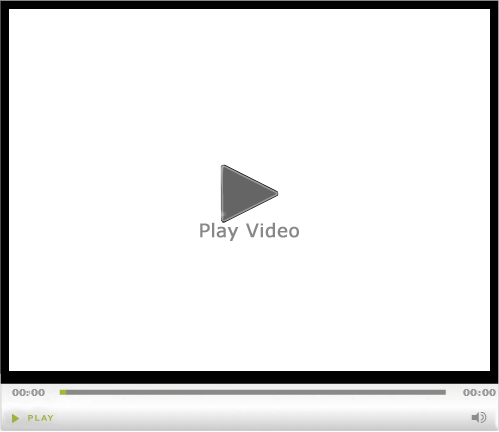
Videos are provided as a guide only. Refer to manufacturer installation instructions and specs for complete information.
Video Transcript for Review of the Replacement Race for 02475 Bearing
Today we're going to take a look at the bearing race for the 02475 bearing. The bearing race will provide the smooth surface for your bearings to roll inside of your trailer hub. Typically, if you have to get new bearings it is a good idea to also replace the bearing races at the same time. The bearing races will pressed into the trailer hub themselves. This was designed to work with the 02475 bearing. In replacement parts we use industry standard numbers, on this race, it is stamped on there 02420 for the race number.
Again, the matching bearing used with this is the 02475. The measurement I want to give you on the races, they're measured outer diameter, edge to edge. What I'm going to do is put this down, the measurement is usually hundredths of and inch so I do want to use a caliper just to show you that. We're going to zoom in here, so we need to get a view. If we just go head, it's all zeroed out, we'll just go ahead and rotate this until we get it. Then once we put it on there you can see that it has a outer diameter of 2.68 inches. I also happen to have the bearing that is used in it, the 02475.
I pulled on of those, that's this one right here. As you can see it fits right into the bearing race. That should do it for the review on the bearing race on the 02475 bearing.
Customer Satisfaction Score:
99% were satisfied with this product
1% of customers were not satisfied
- etrailer mistake
- Wrong item was ordered
- Did not arrive in time
Ratings & Reviews
4.7
999 reviews
Great quality and price
See what our Experts say about this etrailer Trailer Bearings Races Seals Caps
- Replacement Bearings & Grease Seal Kit For 7,000 lb & 8,000 lb Lippert AxleWe have the exact kit you need to replace your bearings, races, and grease seal on your Lippert 7,000 lb axle. I verified directly with Lippert for you that the correct kit is the following: - Bearing Kit # BK3-200 This kit is for one hub, so if you need to replace the bearings and seals on multiple hubs, just be sure to order the correct quantity. And then for grease I recommend the LubriMatic Grease # L11380 with Bearing Packer # ALL647646.
view full answer... - Bearings and Seal for Replacing UFP Dexter 41062 Hub with Kodiak Hub and RotorI spoke with my contact at UFP Dexter and he said that your 41062 hub uses inner bearing 031-030-02, outer bearing 031-032-02, and seal 010-181-00. This is the equivalent of inner bearing # 25580, outer bearing # LM67048, and grease seal # GS-2125DL which can all be found in the bearing kit # BK3-310 along with the races for the bearings. Unfortunately the bearing kit # DBRKHW85G that you purchased isn't the same as the grease seal has a slightly larger diameter but that can easily be fixed....
view full answer... - Replacement Bearings and Seals for Curt 5.2K to 8K AxleThanks for the axle information, Mike! Here are the correct parts according to my contact at Curt: - Bearing # 02475 and Race # 02420 - Bearing # 25580 and Race # 25520 - Grease Seals # RG06-070
view full answer... - Replacement Bearings for Mobile Home Hub with 1-1/4 Outer and 1-3/8 Inner BearingsIt sounds like you're trying to replace hubs on a mobile home axle. Mobile home axles are designed for one time use, to transport the mobile home from point A to point B and then intended to be discarded after that. Because of this, replacement parts are rarely available for most mobile home axles and although we don't have a hub that matches the bearing sizes you mentioned, we have replacement bearings that may work to service your existing hub. For a bearing with a 1.375 inch inner...
view full answer... - Replacement Axle Components For Dexter D80 8,000LB Axle Under 2016 Landmark Orlando 5TH WheelThank you for the image of the axle tag for your Dexter D80 8,000LB axle. This will require the 10-36 Grease Seals # RG06-070 you found. Here is a list of the other components your axle uses should you want to replace or find any parts worn. Inner Bearing # 25580 Inner Race # 25520 Outer Bearing # 02475 Outer Race # 02420 Left Hand Brake Assembly # 23-434 Left Hand Brake Shoes # BP04-245 Right Hand Brake Assembly # 23-435 Right Hand Brake Shoes # BP04-255 Brake Spring Kit # K71-506-00 Hub/Drum...
view full answer... - Replacement Bearings and Seals for Converting 8K Oil Bath Dexter Axle to GreaseI believe I was able to find the bearings and seals that you need, but you'll want to double check on your end by removing the hub and looking at part numbers just to make sure. Inner Bearing - # 25580 Inner Race - # 25520 Outer Bearing - # 02475 Outer Race - # 02420 Grease Seals - # RG06-070 (2.250" ID and 3.376" OD) When it comes to the oil bath caps from what I could find yours should be part # RG04-230 which has an OD of 2.875" and nothing we have is that fits that. Since this is...
view full answer... - Determining Which Replacement Parts Fit Lippert 8000lb AxleWe have exactly what you are looking for. I reached out to my contact at Lippert and based on the information on the axle tag you provided your 8000lb axle uses the following replacement parts: Inner bearing: # 25580 Inner race: # 25520 Outer bearing: # 02475 Outer race: # 02420 Grease seal: # GS-2250DL However we do not sell the hub/rotor assembly that is needed for your axle but it can be order through Lippert as part number 792676.
view full answer... - Replacement Bearings, Races, and Seals for Kodiak Disc Brake Kit K2HR79EWe have everything you would need, but just not in a kit at this time. For bearings you would need # 02475 and # 25580. Race # 02420 and # 25520. Then for a grease seal part # GS-2250DL. Based on all of these part numbers it looks like you have Kodiak kit part # K2HR79E on your trailer.
view full answer... - Replacement Bearings and Seals for 10K Dexter Axles on 2018 Big Tex TrailerAccording to my research the replacement bearings and seals you need for the 10K Dexter Axles on your 2018 Big Tex trailer are parts # 02475 (race # 02420), # 25580 (race # 25520), and # RG06-070. You can verify this by pulling your hub and checking the numbers on the bearings themselves or if you can get me the part number off of your axle I can call Dexter and verify this for you.
view full answer... - Correct Replacement Bearing and Race to Match 02475 Bearing and 14276 RaceThere are differences in them but we do have what you are looking for and they can in some situations be used together. The Replacement Trailer Hub Bearing you have part # 02475 and Replacement Race for 02475 Bearing part # 02420 are designed to work together and the. The race you have Replacement Race for 14125A Bearing part # 14276 for bearing part # 14125A. With that said both bearings have the same inner diameter but the races are slightly different in size the 02475 is 2.688" outer...
view full answer... - How to Install Races in a Hub AssemblyWe do not carry a tool that will help install your races, though I can pass on some information for you that might be helpful. To install your races, this is what you'll want to do, according to our help article on replacing bearings, races and seals on a trailer hub (which I'll link for you). First, place the race in the hub, thin edge towards the outside. Carefully tap in the race until it is level with the hub. After the race is level, the old race can be used to push the new race farther...
view full answer... - Is TruRyde Outer Bearing # LM67048 Equal to Timken Bearing 02475The outer bearing in the TruRyde Bearing Kit, part # BK3-300, is part # LM67048. This outer bearing has an internal diameter of 1.25 inches and uses a bearing race # LM67010 with an outer diameter of 2.328 inches. The bearing kit # BK3-300 is designed for 5,200-lbs axle, 6,000-lbs axle, and 7,000-lbs axle. I looked up a Timken # 02475 bearing and it also shows an internal diameter of 1.25 inches, but is rated for a larger 8,000-lb axle, so it will be used on a larger hub with a different...
view full answer... - Hub Replacement for 8000-lb AL-KO AxleThe best way to determine whether or not a hub is going to fit your axle and spindle is to check the bearing dimensions on your current hub-since that will determine what fits on your spindle. The size/capacity of the axle is more secondary when compared the hub fitting on the spindle; you'll also want to make sure the bolt pattern works with your current wheels to avoid having to purchase new wheels. If your current hub uses inner bearing # 25580 (1.75" inner diameter), outer bearing...
view full answer... - Will the Fulton Grease Cap # F001526 Fit?The Fulton Grease Cap # F001526 will fit if the the inside diameter of the cap mounting surface on your hub is 2.722". You need to use a dial caliper or micrometer to measure the inner diameter of the hub you have on your trailer. The difference between the dome style caps and the flat caps is only aesthetic; they fit and function the same. If you are looking for replacement bearings and races as well, use the following: - Inner Bearing: # 25580 - Outer Bearing: # 02475 - Inner Race:...
view full answer... - Replacement Hub Bearings for 1983 Tandem Axle Motorhome with 02420 Outer RaceThe outer race # 02420 that you found is used with the # 02475 bearing, which features an inner diameter of 1.250 inches. I recommend measuring the inner diameter of your exiting outer bearing with a digital caliper to make sure this matches. When used as an outer bearing it is typically seen on 8,000 pound trailer hubs like the Dexter # 8-285-11UC3, which uses the inner bearing # 25580 (1.750 inch inner diameter). You can again take a few measurements on your existing hub to verify this...
view full answer... - Availability of Complete Bearing Kit for Dexter Axle on 2008 Jayco 5th Wheel CamperWe do offer complete trailer bearing kits for a variety of combinations of inner and outer bearings, races and seals, but we do not happen to offer one that includes each of the components you require. You will then need to order the components as individual parts. Your outer bearing is part # 02475; outer race is part # 02420, inner bearing is part # 25580; inner race is part # 25520; double-lip 10-36 grease seal (a pair) is part # RG06-070. If you do not already have one, you might...
view full answer...
Do you have a question about this Trailer Bearings Races Seals Cap?
Info for this part was:




At etrailer.com we provide the best information available about the products we sell. We take the quality of our information seriously so that you can get the right part the first time. Let us know if anything is missing or if you have any questions.


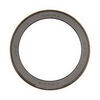








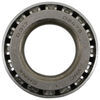
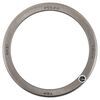





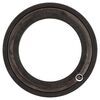














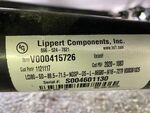

Thank you! Your comment has been submitted successfully. You should be able to view your question/comment here within a few days.
Error submitting comment. Please try again momentarily.